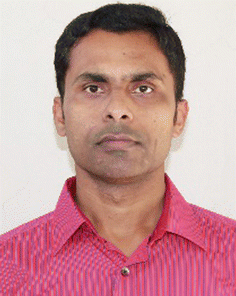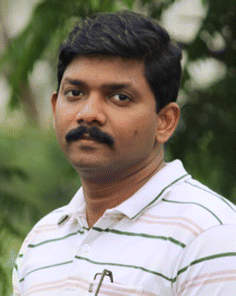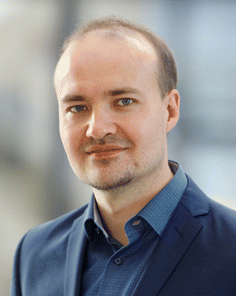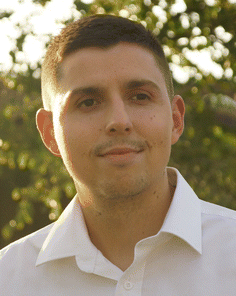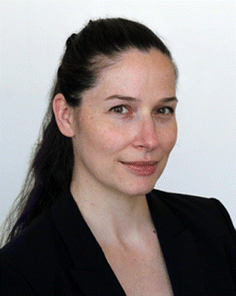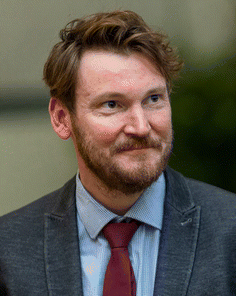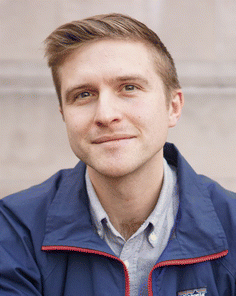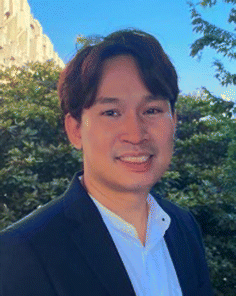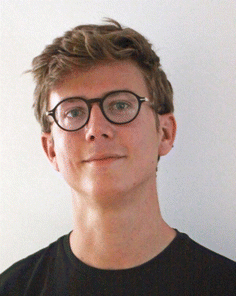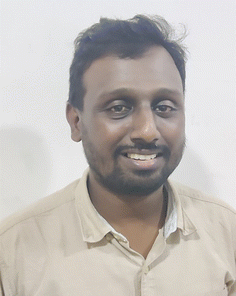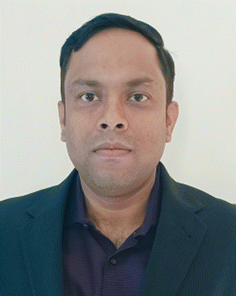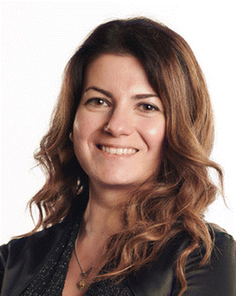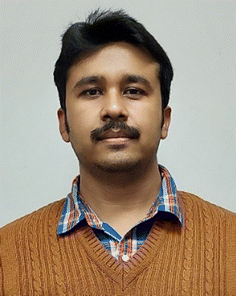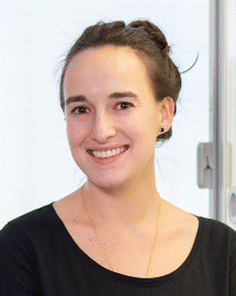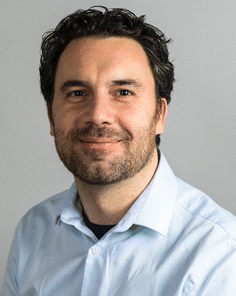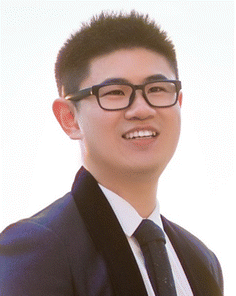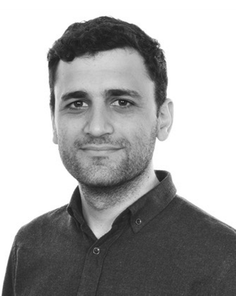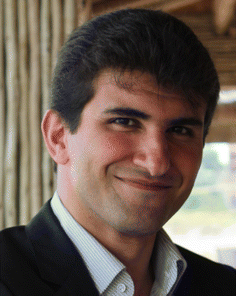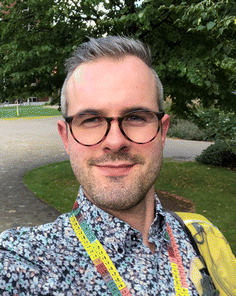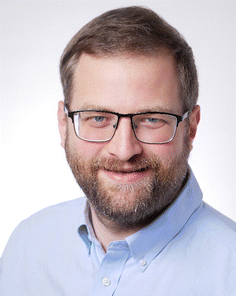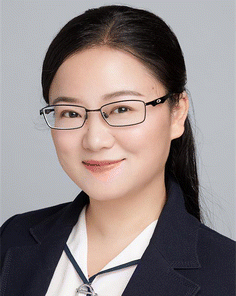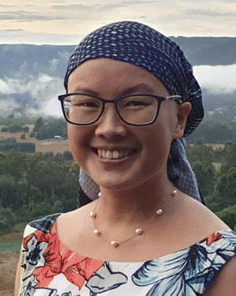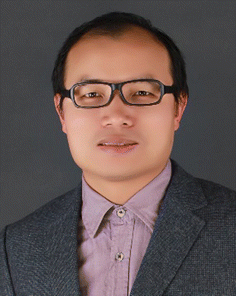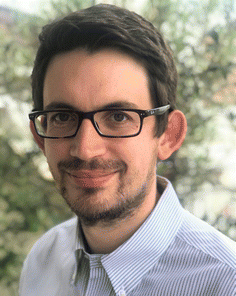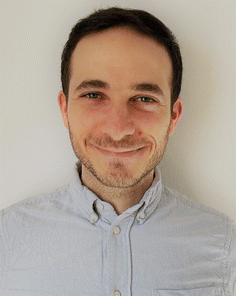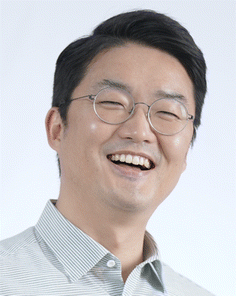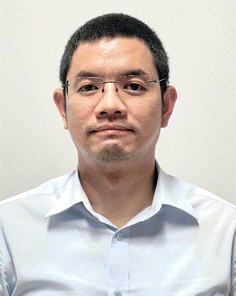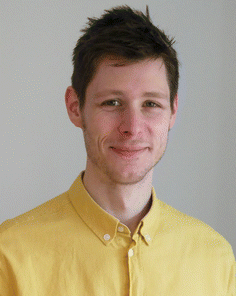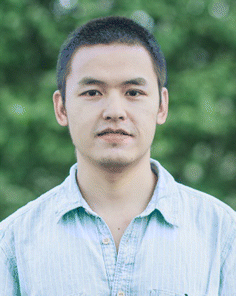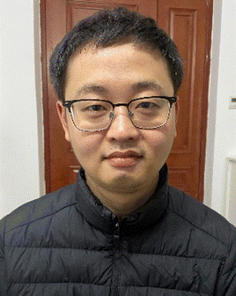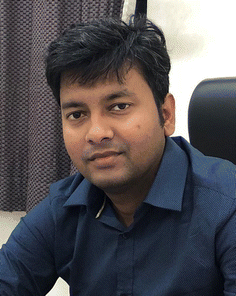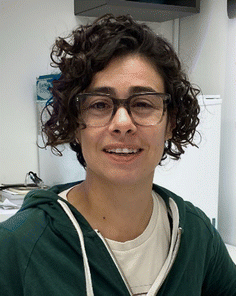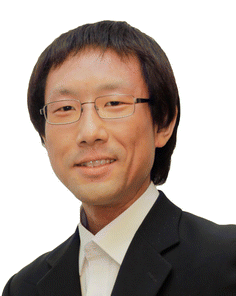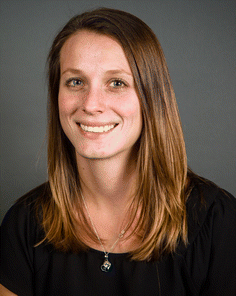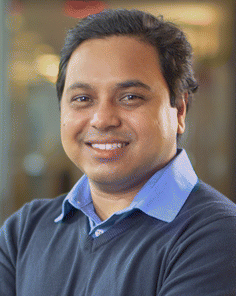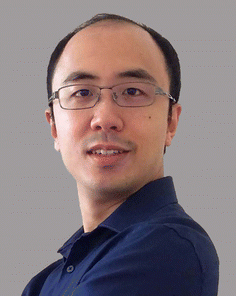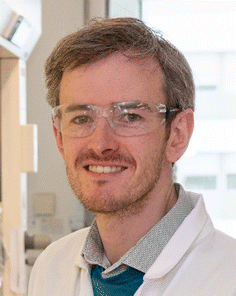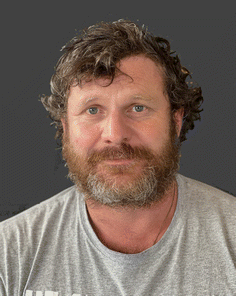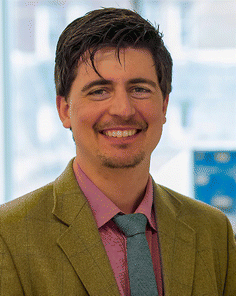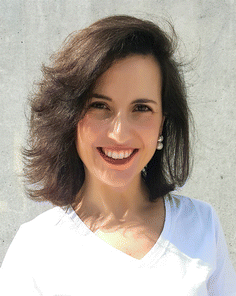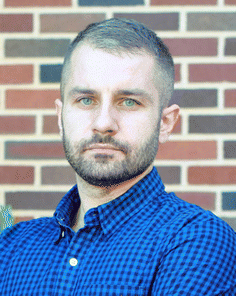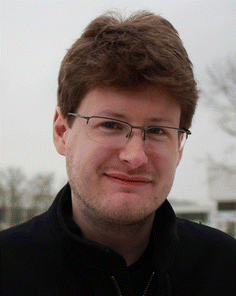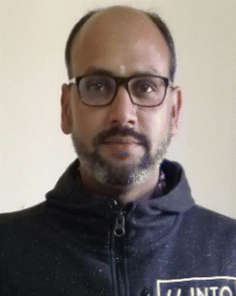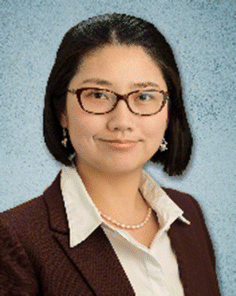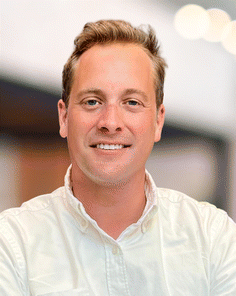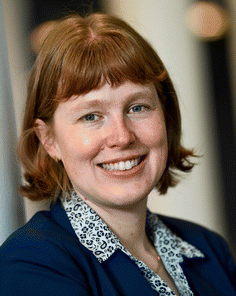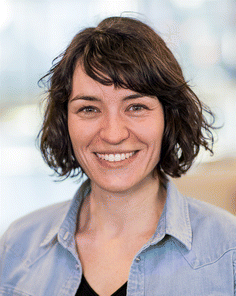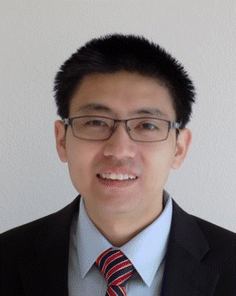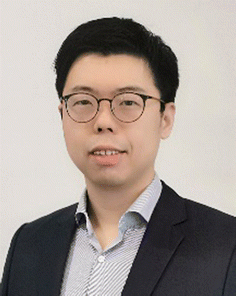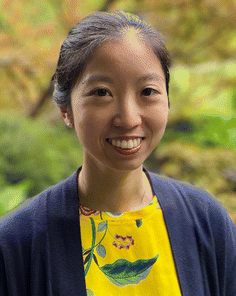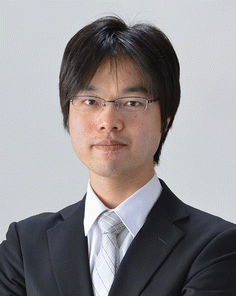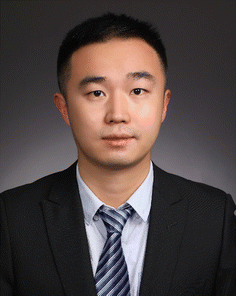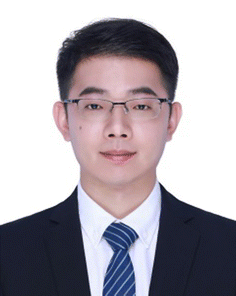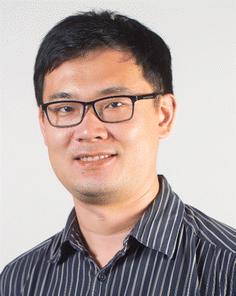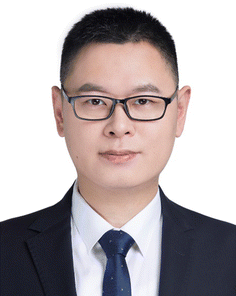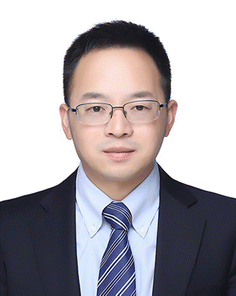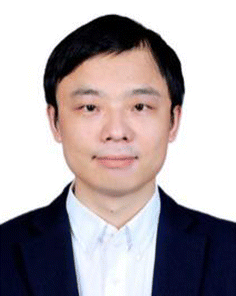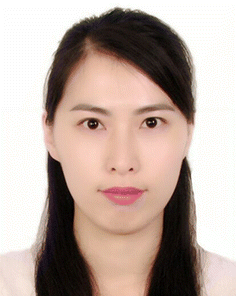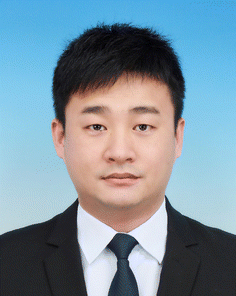Contributors to the Emerging Investigators collection 2022
Debashis Adhikari received his MS degree from IIT Kanpur and moved to the United States to join a PhD program at Indiana University, Bloomington. During his PhD, he worked on synthetic inorganic/organometallic chemistry under the tutelage of Professor Daniel J. Mindiola. Following that, Debashis started a postdoctoral position at Northwestern University, Evanston, in the laboratory of Professor SonBinh T. Nguyen. In the fall of 2016, he started his independent career at IISER Mohali where his group is focused on designing homogeneous catalysts utilizing redox-active ligands and base metals. Parallel to their synthetic endeavors his group now attempts to perform computational experiments to support their findings. When not in the laboratory, Debashis loves to spend time with his family and watch soccer.
Santhosh Babu Sukumaran obtained his PhD on oligo(p-phenylenevinylene) self-assembly, from the National Institute for Interdisciplinary Science and Technology (CSIR-NIIST), Trivandrum, India. After several years of postdoctoral studies at the Max Planck Institute of Colloids and Interfaces, Germany, the National Institute for Materials Science (NIMS), Japan, and the University of Namur, Belgium, he joined the National Chemical Laboratory (CSIR-NCL) in 2014 as a senior scientist. His research interests include solvent-free organic liquids, luminescent organic materials, and 2D-polymers for catalytic and energy applications.
Frank Biedermann obtained his PhD in supramolecular and polymer chemistry under the guidance of Professor Oren Scherman (University of Cambridge, UK) in 2013. Afterwards, he became a postdoctoral fellow at Jacobs University in Bremen (Germany) and at the Institute of Supramolecular Science and Engineering in Strasbourg (France). In 2016, he received the prestigious Emmy Noether Grant from the German Research Foundation and started his independent research group at the Karlsruhe Institute of Technology (KIT). In 2021, he was awarded the highly endowed Aventis Life Science Bridge Award for his contributions to supramolecular assay development for molecular diagnostics applications.
Witold Bloch is a lecturer in chemistry at Flinders University, Australia. He obtained his PhD in chemistry from the University of Adelaide in 2014. In the following year he was awarded an Alexander von Humboldt post-doctoral fellowship which he undertook in the laboratory of Professor Guido Clever (TU Dortmund, Germany). In 2017 he returned to the University of Adelaide to commence his independent career as a Ramsay fellow before being awarded an ARC DECRA fellowship in 2019. His research group focuses on porous metal–organic materials and supramolecular coordination cages for applications in sensing and environmental remediation.
Eszter Boros is an associate professor of chemistry at Stony Brook University. Eszter obtained her MSc (2007) at the University of Zurich and her PhD (2011) in chemistry from the University of British Columbia, followed by a postdoctoral fellowship at Harvard Medical School from 2011–2015. In 2017, Eszter commenced her independent career at Stony Brook University, where her research group develops new metal-based diagnostics and therapeutics at the interface of radiochemistry, inorganic chemistry and medicine. Eszter was named a 2020 Moore Inventor fellow, the 2020 Jonathan L. Sessler fellow, and a 2022 Alfred P. Sloan research fellow in chemistry.
Johannes ‘JB’ Broichhagen uses chemistry to seek new imaging modalities for biological applications. He studied chemistry before obtaining his PhD under the supervision of Dirk Trauner from LMU Munich in 2014. Next, he conducted postdoctoral work in the group of Kai Johnsson (at EPFL and MPI for Medical Research). Since March 2020, he has been an independent junior group leader at the Leibniz-FMP in Berlin. In 2022, he was awarded a prestigious ERC starting grant as well as the PicoQuant Young Investigator Award of the GBM and the ORCHEM Prize of the Liebig Association for Organic Chemistry (GDCh).
Carl Brozek hails from Chicago, IL, where he attended the University of Chicago to learn coordination chemistry with Professor Gregory Hillhouse. At the Massachusetts Institute of Technology, he earned his PhD studying the reactivity of MOF metal nodes under Professor Mircea Dincă. As a WRF Innovation fellow at the University of Washington, he investigated the redox properties of semiconductor nanocrystals with Professor Daniel Gamelin and then started his independent career at the University of Oregon in 2018. His research focuses on porous nanocrystals, dynamic bonding, and energy capture. He was recently named a 2022 Cottrell Awardee and was the 2022 Dream Chemistry Award winner.
Thanthapatra (Valentine) Bunchuay obtained a BSc (Hons) degree from Mahidol University where he did a senior project with Professor Chutima Kuhakarn on iodine chemistry. After that, he carried on his MSc degree in the field of MOFs materials under the supervision of Professor Jonggol Tantirungrotechai. In 2014, he joined the group of Professor Paul Beer at the University of Oxford, where he employed sigma-hole interactions incorporating into mechanically interlocked molecules for anion recognition in aqueous media. In 2019, he started “The SupraValentine Research Lab” at Mahidol University. His research interest includes the synthesis of functional macrocycles for applications in sensing, extraction and recovery, delivery, and soft materials.
Clément Camp is currently a CNRS researcher in the Laboratory of Catalysis, Polymerization, Processes and Materials (CP2M), in Lyon (France). He graduated in 2010 from the École Normale Supérieure de Lyon and received his PhD in 2014 from the University of Grenoble (France), supervised by Dr Marinella Mazzanti. He then joined Professor John Arnold’s group at the University of California, Berkeley (USA) for postdoctoral training. His research interests deal with surface organometallic chemistry and cooperative effects in catalysis, and particularly bimetallic systems. Clément has authored 45 scientific papers, obtained an ERC Starting Grant and received the CNRS Bronze medal in 2022.
Aravind Kumar Chandiran is an associate professor at the Department of Chemical Engineering, Indian Institute of Technology Madras (IIT Madras). He is also a head of the Centre for Photo- and Electro-chemical Energy sciences (C-PEC). His group is working on various aspects of solar energy storage and conversion, including solar water splitting, metal–air batteries, and lithium-ion battery operational safety. His work covers from atomic level tuning of materials and device physics to prototyping of products. Prior to joining IIT Madras, Aravind did his PhD at the Swiss Federal Institute of Technology (EPFL) and a postdoc at the University of California, Berkeley.
Subrata Chattopadhyay is currently working as an assistant professor at the Department of Chemistry, Indian Institute of Technology, Patna. He completed his BSc (chemistry) at Raghunathpur College, affiliated to the University of Burdwan, India, his MSc (chemistry) at the Indian Institute of Technology Madras, India, and his PhD at RWTH Aachen University, Germany, under the supervision of Dr Helmut Keul and Professor Martin Moeller. Thereafter he worked as a postdoctoral researcher at Ghent University, Belgium, with Professor Filip Du Prez (2014–2016). His research interests lie in sustainable synthesis and self-assembly of stimuli responsive and biodegradable functional polymers and materials for different applications, such as controlled delivery, antimicrobials, sensing and environmental remediation.
Claudia Contini is a L’Oréal-UNESCO UK Rising Talent Engineering fellow in the Department of Chemical Engineering, and future BBSRC Discovery fellow in the Department of Chemistry at Imperial College London. Prior to this, she held postdoc positions and an Institutional Strategic Support Fund Fellowship at the same institution. She completed her undergraduate and master studies in pharmaceutical chemistry at the University of Padua in Italy, before obtaining a PhD in physical chemistry at the University College London in 2017. Her research focuses on the engineering of synthetic life-like systems that mimic biological properties and functions for biomedical applications.
Soumyajit Das received his MSc degree in chemistry from IIT Guwahati in 2007. He then joined IISER Kolkata to pursue his doctoral research under Professor Sanjio S. Zade. In 2012, he joined Professor Jishan Wu’s group at the National University of Singapore as a postdoctoral fellow. He returned to India in 2016 to work as a scientist in industry (Sai Life Sciences and Aurigene), before starting his independent career in 2019 at the IIT Ropar as an assistant professor of chemistry. His research focuses on the synthetic and physical organic chemistry of π-conjugated organic molecules, and their optoelectronic applications.
Claire Deo is a group leader at EMBL Heidelberg, Germany. She holds a PhD from ENS Paris-Saclay (France), for which she developed photoswitchable catalysts. Her postdoctoral work at Janelia Research Campus (USA), focused on engineering new fluorophores and calcium biosensors. In her independent group research she tackles the development of new molecular tools for biological imaging at the interface of synthetic chemistry and protein engineering.
Marco Di Antonio has a MSci in chemistry from Pavia University (2007) and a PhD in molecular sciences from Padua University (2011). Marco joined Cambridge University as a research associate in 2011, and continued as a senior research associate in 2015. Marco started his own group at Imperial College in 2018 as a BBSRC-fellow, before being promoted to a lecturer in 2022. He holds a satellite group at the Crick Institute and a Lister Research Prize (2022). His current research focuses on combining chemical–biology tools with genetics to investigate the role of nucleic acid structures and modifications in ageing and cancer biology.
Zhichao Dong received his BS degree (2011) from Jilin University (Changchun, China), completed his PhD (2016) at the Institute of Chemistry, Chinese Academy of Sciences (Beijing, China) under the direction of Professor Lei Jiang. He joined the Technical Institute of Physical Chemistry, Chinese Academy of Sciences (Beijing, China) in 2016, and became a full professor in 2020. He has recently been recognized by the National Science Fund for Outstanding Young Scholars and Young Elite Scientists Sponsorship Program. His current research focus is on the biomimetic overflow interfacial materials.
Yuval Elani is a UKRI Future Leaders fellow and lecturer in the Department of Chemical Engineering at Imperial College London. He studied Natural Sciences as an undergraduate (Cambridge, 2009) followed by a PhD in chemical biology (Imperial College, 2015). After his PhD he held a series of fellowships working on various topics in biochemical engineering. He leads a diverse group of c. 20 researchers working on frontier research in applied biotechnology, including soft matter particle manufacture, microfluidics, artificial cells, bio-membrane engineering and synthetic biology.
Mohammadali Foroozandeh obtained his PhD in NMR spectroscopy from the Université de Genève (Switzerland) in 2012. From 2013 to 2018 he was a research assistant and later a researcher co-investigator at the University of Manchester (UK), where he was involved in the development of ultrahigh-resolution and ultra-broadband NMR techniques. Since 2018, he has been a Royal Society University research fellow in the Department of Chemistry, University of Oxford (UK). His research interests include designing radiofrequency and microwave pulses, optimisation of NMR and ESR experiments, signal processing and spectral estimation, and theory and applications of optimal control techniques for quantum systems.
Conrad Goodwin is a Royal Society University research fellow at the University of Manchester, working in the Centre for Radiochemistry Research. He obtained his PhD from the same university in 2017 with Professor David Mills, which was followed by a 1-year EPSRC Doctoral Prize Fellowship. A move to Los Alamos National Laboratory from 2018 to 2021 as a J. Robert Oppenheimer distinguished postdoctoral fellow (with Dr Andrew Gaunt) afforded Conrad the chance to work on transuranium elements up to the heaviest available in mg quantities (californium), and this work inspired him to bring these experiences to the UK. His group is focussed on well-defined coordination chemistry and redox processes in the f-block.
Stephan Hacker obtained his PhD working with Professor Andreas Marx at the University of Konstanz and performed postdoctoral research with Professor Benjamin Cravatt at the Scripps Research Institute in La Jolla. Afterwards, he moved to the Technical University of Munich as an independent group leader with a Liebig Fellowship. In 2021, he became an assistant professor at the Leiden Institute of Chemistry. Stephan Hacker’s group develops covalent protein ligands targeting diverse amino acids as well as chemoproteomic technologies to study their target engagement with resolution of the modified amino acid residue in order to identify new target proteins for antibiotics.
Rongrong Hu received her BSc degree in chemistry from Peking University in 2007 and her PhD in chemistry from Hong Kong University of Science and Technology (HKUST) in 2011, under the guidance of Professor Ben Zhong Tang. She then worked on aggregation-induced emission materials as a research associate at HKUST since 2012. In 2014, she started her research group as an associate professor at South China University of Technology, and worked as a full professor since 2016. Her research interests focus on the development of multicomponent polymerization methodology and sulfur/selenium-containing functional polymer materials.
Carol Hua is currently a lecturer in chemistry at Deakin University, Australia. Carol received her BSc from the University of New South Wales (2011) and her PhD from the University of Sydney (2016) before undertaking postdoctoral positions at the University of Limerick, Ireland, and Northwestern University, USA, supported by the Endeavour and American–Australian fellowships. In 2018, Carol moved back to Australia to start her independent research career as a McKenzie fellow at the University of Melbourne. Current research interests include the development of coordination polymers and metal–organic frameworks as chemical sensors and stimuli responsive materials.
Wangqing Kong received his PhD in chemistry (2011) from Zhejiang University under the guidance of Professor Shengming Ma. After postdoctoral research with Professor Cristina Nevado at the University of Zurich and Professor Jieping Zhu at École Polytechnique Fédérale de Lausanne (EPFL), he started his independent career at the Institute for Advanced Studies, Wuhan University in 2017. Currently his research interests focus on the efficient construction of functionalized heterocycles with quaternary stereocenters via Ni-catalyzed reductive cyclization/cross-coupling and their applications in the synthesis of biologically active natural products and drug molecules.
Matt Langton received his MChem and DPhil from the University of Oxford, the latter under the supervision of Professor Paul Beer. He was then an Oppenheimer Early Career research fellow at the University of Cambridge, with Professor Chris Hunter FRS. He started his independent career in Oxford as a Royal Society University research fellow in 2018, where he is now an associate professor of inorganic chemistry and fellow of Balliol College. He leads a research group working on supramolecular, coordination and lipid bilayer membrane chemistry.
Luca Laraia studied chemistry at Imperial College London before obtaining a PhD in chemical biology from the University of Cambridge in 2014. He moved to the Max Planck Institute of Molecular Physiology as an Alexander von Humboldt post-doctoral researcher before taking up an assistant professorship at the Technical University of Denmark. As an associate professor in chemical biology, he now leads a research group focused on developing chemical tools to study sterol-mediated processes as well as new methods in photochemistry and compound library synthesis. He obtained an ERC Starting Grant and a Novo Nordisk Hallas Møller Emerging Investigator award in 2021.
Hong Geun Lee is a graduate of Seoul National University (BS and MS). He was drawn into the world of organic synthesis in the laboratory of Professor Matthew Shair while he was pursuing his PhD at Harvard. During his postdoctoral period in the Buchwald laboratory at the Massachusetts Institute of Technology, he realized that the total synthesis is not the only fascinating discipline in organic synthesis. In 2017 he returned to his alma mater as an assistant professor. Since then, he and his colleagues have been attempting to exploit the controlled reactivity of high-energy species to mediate the covalent bond formation at the C(sp3) centers.
Pawaret Leowanawat is an assistant professor in chemistry at Mahidol University, Thailand. He obtained his PhD in chemistry from the University of Pennsylvania in 2013 under the supervision of Professor Virgil Percec. Then, he continued postdoctoral training in the laboratory of Professor Frank Würthner at the University of Würzburg, Germany. His research group is interested in the development of new synthetic transformations towards novel polyaromatic scaffolds and the investigation of their potential applications.
Jamie Lewis obtained his PhD from the University of Otago, New Zealand, under the supervision of Professor James Crowley. He then spent three years in the group of Professor Stephen Goldup at the University of Southampton, initially as a PDRA and subsequently a Marie Skłodowska-Curie fellow. He began his independent career in 2017 as an Imperial College research fellow. In late 2022 Jamie joined the School of Chemistry at the University of Birmingham as a Royal Society University research fellow and assistant professor in supramolecular chemistry. Jamie’s research interests are in synthetic supramolecular chemistry, focussing on mechanically interlocked molecules and metallosupramolecular architectures.
Baosheng Li obtained his BS at Guizhou University in 2008. He then obtained his PhD from Lanzhou University (with Professor Xiao-Ping Cao) in 2013. After postdoctoral research at Nanyang Technological University at Singapore (with Professor Yonggui Robin Chi), he was appointed as a tenure-track assistant professor in 2016 and then a full professor in 2022 at Chongqing University (China). His research interests focus on the construction of nitrogen-containing medium rings and their application in the synthesis of pharmaceuticals.
Xueqin Liu is a professor at State Key Laboratory of New Textile Materials and Advanced Processing Technologies, Wuhan Textile University. He received his PhD in materials science and engineering from the China University of Geosciences (Wuhan) in 2016. He spent two years in the group of Professor Zhiqun Lin at the Georgia Institute of Technology as a visiting PhD student from 2014. His research focuses on the synthesis of semiconductor materials for applications in solar-fuel conversion, photoelectrochemical sensors and environmental remediation.
Long Luo is currently the Carl R. Johnson assistant professor of chemistry at Wayne State University (WSU). He received his BS (2009) in applied chemistry from Beijing University of Aeronautics and Astronautics and his PhD (2014) in chemistry from the University of Utah. Before joining WSU in 2017, he worked as a postdoc at the University of Texas at Austin. He received the NSF CAREER Award and NIH MIRA Award. His current research interests include developing electrochemical sensors, electrosynthesis of functional nanomaterials and organic drug molecules.
Yun Ma obtained his PhD from Hong Kong Baptist University in 2015, under the supervision of Professor Wai-Yeung Wong. He is currently a full professor at the State Key Laboratory for Organic Electronics and Information Displays, and the Institute of Advanced Materials, Nanjing University of Posts and Telecommunications. His research focuses on the development of stimuli-responsive materials for optical information recording and anti-counterfeiting applications.
Subhabrata Maiti is currently working as an assistant professor at the Indian Institute of Science Education and Research (IISER), Mohali. He obtained his PhD in 2013 from the Indian Association for the Cultivation of Science (IACS), Kolkata (supervisor: Professor Prasanta Kumar Das). Then he moved to the University of Padova, Italy, to work with Professor Leonard Prins as a postdoc. In 2017, he did another postdoctoral stint with Professor Ayusman Sen at Pennsylvania State University (USA) before starting his independent career in 2018. His present research focus is on exploring the chemistry of complex biomolecular systems, emphasizing dynamic (bio)colloidal phoresis, (bio)catalysis and self-assembly.
Anat Milo received her BSc/BA in chemistry and humanities from the Hebrew University of Jerusalem, her MSc from UPMC Paris with Berhold Hasenknopf, and her PhD from the Weizmann Institute of Science with Ronny Neumann. Her postdoctoral studies at the University of Utah with Matthew Sigman focused on physical organic descriptors and data science approaches in chemistry. At the end of 2015 she joined the Department of Chemistry at Ben-Gurion University of the Negev, where her research group develops experimental, statistical, and computational strategies for identifying molecular design principles in catalysis with a particular focus on stabilizing and intercepting reactive intermediates in organocatalysis by second sphere interactions.
Akimitsu Narita is an assistant professor at the Okinawa Institute of Science and Technology Graduate University (OIST). He studied chemistry at the University of Tokyo, Japan, and then joined the group of Professor Klaus Müllen at the Max Planck Institute for Polymer Research (MPIP) in Mainz, Germany, where he obtained his doctorate in chemistry in 2014. In the same year, he became a project leader at MPIP, and joined OIST in 2018 to lead the Organic and Carbon Nanomaterials Unit. His current research focuses on the synthesis, characterization and applications of functional nanocarbon materials with atomically precise chemical structures.
Lea Nienhaus received her BSc in chemistry from the Universität Ulm, Germany, in 2010. She then obtained her PhD in 2015 from the University of Illinois at Urbana-Champaign working with Professor Gruebele. After her postdoctoral work with Professor Bawendi at the Massachusetts Institute of Technology, her independent career began at Florida State University in 2018. Her current research in the Nienhaus lab focuses on triplet generation at the hybrid inorganic/organic interface, particularly utilizing bulk perovskite materials as triplet sensitizers for photon upconversion. Using a combination of optical spectroscopy and scanning probe microscopy, the complex photophysical processes occurring in these systems are unravelled.
Amie Norton received her Bachelor of Science degree in chemistry from the University of Missouri and a PhD in chemistry from the University of Cincinnati. Following this PhD work, Amie worked at the USDA in the Wheat Quality and Grain Structure Unit developing grain nanoparticles. Currently, Amie works at Kansas State University, Department of Entomology developing nanocides for crop pests.
Md Nurunnabi (Nabi) has been an assistant professor of Pharmaceutical Sciences, and Biomedical Engineering at the University of Texas at El Paso (UTEP), since 2019. He is a core member of the Border Biomedical Research Center (BBRC), and Lead Investigator for the Space Health Program within the Aerospace Center (cSETR) at UTEP. His research interest lies between disease detection and delivery science using advanced bioinspired and bioengineering approaches. Currently he is serving as Chair of the Bioengineering Focus Group of the Controlled Release Society.
Jun Ohata received his BS in 2011 and his MS in 2013 from Osaka Prefecture University, where he worked with Professor Hiroyuki Matsuzaka studying reactive carbon species on Ru complexes. He earned his PhD in 2018 in Professor Zach Ball’s group at Rice University, studying protein bioconjugation by metal catalysis. Then, he worked with Professor Chris Chang at the University of California, Berkeley, as a Japan Society for the Promotion of Science postdoctoral fellow, developing chemical probes for cellular metal ions through protein labeling. In 2020, he took up the assistant professor position at North Carolina State University developing novel strategies for bioconjugation.
Seb Pike is a Royal Society University research fellow at the University of Warwick. His research group explores the synthesis and photochemistry of nanoscale cluster molecules which sit at the interface between molecular and materials chemistry. Seb completed his PhD in inorganic chemistry at the University of Oxford under the guidance of Professor Andrew Weller before studying as a post-doctoral researcher at Imperial College London with Professor Charlotte Williams and Professor Milo Shaffer. He began his independent research at the University of Cambridge as a Herchel Smith research fellow before moving to Warwick in 2019.
Dan Preston completed his PhD at Otago with James Crowley in 2017, before a stint as a Rutherford postdoctoral fellow at the University of Canterbury, mentored by Paul Kruger, from 2018–2020. He is now a DECRA fellow and group leader at the Australian National University. He is interested in controlling connectivity and conformation for the self-assembly of metallo-supramolecular systems. When he is not working on that, he is spending time with his family or getting excited about sports.
Michael Ruggiero is an associate professor of chemistry at the University of Vermont. He received his BS from SUNY Geneseo in 2012, his PhD in 2016 from Syracuse University, and he was a postdoctoral fellow at the University of Cambridge from 2016–2018. He was introduced to terahertz spectroscopy by Professor Timothy Korter, and Professor Axel Zeitler deepened his love for ‘wimpy photons’ during his postdoctoral studies. He was a recipient of the NSF CAREER award in 2021 and he was included in the annual Forbes 30 Under 30 list in 2018. Outside of the lab, he enjoys hiking and skiing.
Amparo Ruiz-Carretero is a CNRS researcher at the Institute Charles Sadron in Strasbourg (France). She studied chemistry at the University of Castilla–La Mancha (Spain), where she obtained her PhD under the supervision of Professor A. de la Hoz and Dr A. Sanchez. She spent a big part of her PhD in the group of Professor E. W. Meijer and Professor A. Schenning (Technical University of Eindhoven). After postdocs in the groups of Professor S. Stupp (Northwestern University) and Professor L. De Cola (University of Strasbourg), she obtained her current CNRS position in 2015. Her research interests include the study of hydrogen-bonded semiconductors, supramolecular chirality, charge transport properties and spin dynamics.
Tomče Runčevski did his PhD at the Max Planck Institute for Solid State Research in Germany. He graduated in 2014 with Honors, and he was awarded the Otto Hahn Medal. After a one year postdoctoral stay at the MPI, he joined University of California, Berkeley and Lawrence Berkeley National Laboratory in 2015. In 2018, he started his independent career at the Southern Methodist University, as an assistant professor. His research focus is on solid state chemistry, and solid–liquid equilibria. His current projects range from minerals on Titan, Saturn’s icy moon, to quenched molten salts. He has received the NSF CAREER and ACS PRF awards.
Daniel J. Scott earned his PhD from Imperial College London under the supervision of Dr Andrew Ashley and Professor Matthew Fuchter. He subsequently completed an EPSRC Doctoral Prize fellowship at the same institution, which was followed by an Alexander von Humboldt fellowship at the University of Regensburg working with Professor Robert Wolf. In 2021 he began his independent research career as an EPSRC Early Career fellow at the University of Oxford, where his research interests include molecular inorganic chemistry, synthetic photochemistry, and the activation and functionalization of industrially important small molecules such as N2 and P4.
Upendra Sharma received his PhD in chemistry from the CSIR-IHBT, Palampur/GNDU, Amritsar, in 2012. Then he joined Professor Debabrata Maiti, IIT, Bombay, for his first postdoc. He did his second postdoc with Professor Sukbok Chang, KAIST, South Korea. Dr Upendra Sharma joined as a Scientist in CSIR-IHBT, Palampur, India, in September 2014, where his group focuses on transition-metal-catalyzed C–H activation/functionalization and natural product chemistry. In 2016, Dr Sharma received the Thieme Chemistry Journal Award and Manjushree Pal Memorial Award for Best Oral Presentation from the Ethnopharmacology Society of India, Kolkata, in 2017. He has published >140 research articles with an H-index of 32, and filed three patents.
Mei Shen is an assistant professor of chemistry, neuroscience program, at the Beckman Institute–University of Illinois Urbana-Champaign. Her research aims to push the limits of electroanalytical chemistry in bioanalysis, especially for the real-time interrogation of multiple groups of chemical transmitters with nanometer spatial resolution. Professor Shen aspires to be a (female) role model to her students. Her distinctions include the NSF CAREER Award, the Award for Excellence in Guiding Undergraduate Research, the ACS Division of Analytical Chemistry Arthur F. Findeis Award for Achievements by a Young Analytical Scientist, and the 2021 Scialog Collaborative Innovation Award.
Weston Struwe is a UKRI Future Leaders fellow and group leader in the Department of Chemistry and Kavli Institute for NanoScience Discovery at the University of Oxford. His research focuses on viral glycoproteins and understanding the relationship between glycosylation, structural dynamics and glycan-dependent biomolecular interactions. His group develops innovative methods in mass spectrometry (ion mobility, HDX and native MS) as well as mass photometry, a single molecule imaging technique he helped develop. From 2018–2020 he served as Chief Scientific Officer of Refeyn. He received his PhD from the University of New Hampshire and BS from the University of Wisconsin-Madison.
Hennie Valkenier studied chemistry at the University of Groningen and obtained her PhD from this university in 2011. She has worked as a post-doc with Professor Anthony Davis at the University of Bristol and with Professors Kristin Bartik and Gilles Bruylants at the Université libre de Bruxelles (ULB), before getting a permanent position as FNRS researcher in the Engineering of Molecular NanoSystems Laboratory at the ULB in 2018. She was awarded an ERC starting grant that same year. With her team and collaborators, she is developing synthetic transporters for ions and new methods to study transport processes in liposomes.
Ghislaine Vantomme studied chemistry at the Ecole Normale Supérieure (Cachan, France). She received her MSc degree from Sorbonne University (Paris) in 2010 and worked with Professor K. Nakanishi and Professor N. Berova at Columbia University (New York). In 2014 she defended a PhD under the supervision of Professor J.-M. Lehn (University of Strasbourg). Switching to materials chemistry, she joined Eindhoven University of Technology as a postdoctoral fellow to work with Professor E. W. Meijer. In 2019, she was appointed assistant professor at TU/e. Her research interests include the understanding of the fundamentals of supramolecular chemistry and their translation into interactive materials.
Yiming Wang was born in Shanghai, China, and grew up in Colorado, United States. He graduated with an AB/AM degree in chemistry, and physics and mathematics, from Harvard University in 2008 after conducting research in the group of Professor Andrew Myers. After obtaining his PhD under the supervision of Professor Dean Toste at the University of California, Berkeley, in 2013, he conducted postdoctoral research in the laboratory of Professor Stephen Buchwald at the Massachusetts Institute of Technology (USA) as a National Institutes of Healthpostdoctoral fellow. He joined the Department of Chemistry at the University of Pittsburgh in the fall, 2017.
Hao Bin Wu received his BS degree in chemistry from Fudan University in 2010, PhD in materials science and engineering from Nanyang Technological University supervised by Professor Xiong Wen (David) Lou in 2015, then worked as a postdoctoral researcher in Professor Yunfeng Lu’s group at University of California, Los Angeles. He joined Zhejiang University in 2017 and became a research group leader. His research group explores novel nanostructured and hybrid materials for electrochemical energy storage and conversion. Dr Wu has co-authored over 130 peer-reviewed articles and has a H-index of 82. He was named a Clarivate Analytics’ Highly Cited Researcher from 2017 to 2022.
Dianne Xiao is an assistant professor in the Department of Chemistry at the University of Washington. She received her PhD from the University of California, Berkeley, in 2016 and completed postdoctoral studies at Stanford University before beginning her independent career at the University of Washington in 2019. Her synthesis-driven research program focuses on developing new porous materials to meet current challenges in clean energy and sustainability.
Hiroshi Yamagishi is an assistant professor at the Department of Materials Science, Faculty of Pure and Applied Sciences, University of Tsukuba. He has been a co-founder of MyQTech Inc. since 2022. He joined Professor Aida’s group in 2012 and obtained his PhD in the Department of Chemistry and Biotechnology, School of Engineering, the University of Tokyo in 2018. After graduation, he joined the research group led by Professor Yamamoto as an assistant professor. His research focuses on supramolecular chemistry and crystal engineering in conjunction with optical and laser properties.
Jin-Dong Yang graduated from Nankai University (2009). He received his PhD in organic chemistry from Nankai University (2014). Then, he became a postdoctoral fellow in the same campus (2014–2017). He joined Tsinghua University as an assistant professor in the Department of Chemistry in 2017, and was promoted to an associate professor in 2021. His current research interests are in physical organic chemistry of organic hydrides and transition-metal compounds, as well as their synthetic applications.
Long Ye has been a professor at the School of Materials Science and Engineering of Tianjin University since October 2019. He received his PhD from the Institute of Chemistry, Chinese Academy of Sciences in 2015. From 2015 to 2019, he was a postdoctoral researcher and was later promoted to research assistant professor, at the Department of Physics, North Carolina State University. His current interests include polymer physics of conjugated polymers and developing high performance organic/hybrid electronics (solar cells and photodetectors).
Mingxu You is an associate professor of chemistry at the University of Massachusetts Amherst. He received his BS in chemistry from Peking University (2008) and PhD in analytical chemistry from the University of Florida (2012) with Professor Weihong Tan. Before starting his independent career at the University of Massachusetts Amherst (2016), Mingxu further pursued his postdoctoral research with Professor Samie R. Jaffrey at Weill Cornell Medicine. Mingxu is now applying nature’s building blocks – DNA/RNA – to develop next-generation platforms for disease diagnostics and therapy. He has received the Alfred P. Sloan research fellowship, Camille Dreyfus Teacher-Scholarship, NIH MIRA, NSF CAREER, and ACS Burlew Award.
Le Yu received his BEng degree in materials engineering from Shandong University in 2008, his MS degree in chemistry from Shanghai University in 2011, and his PhD in chemical engineering from Nanyang Technological University in 2016. He is currently a full professor at the Beijing University of Chemical Technology. His research interests include material design for lithium/zinc metal batteries, ion capacitors and electrocatalysis. He was listed as a Highly Cited Researcher by Clarivate Analytics from 2018–2021.
Liang Yuan obtained his BS in chemistry of materials (2009) and MS in polymer science (2012) under the guidance of Professor Hanying Zhao from the College of Chemistry at Nankai University. In 2016, he received his PhD under the supervision of Professor Chuanbing Tang at the University of South Carolina. He worked as a senior R&D scientist at the Specialty Chemicals Department of Ingevity Corporation (USA, 2017–2020) before he moved back to China, joining the Biomass Molecular Engineering Center at Anhui Agricultural University as a professor. His research interest is on sustainable polymers from bio-based phenolic chemicals and plant oils.
Bin Zhang received his BS degree from Shaanxi Normal University in 2008 and his PhD from the University of Chinese Academy of Sciences under the guidance of Professor Yulei Zhu in 2013. He is currently an associate professor at the State Key Laboratory of Coal Conversion, Institute of Coal Chemistry, Chinese Academy of Sciences, and a member of the Youth Innovation Promotion Association of CAS. He has published nearly 48 papers in peer-reviewed journals. His research interests include atomic layer deposition, catalytic conversion of biomass, tandem catalysis, and the rational design of heterogeneous catalysts to synthesize fine chemicals.
Linjuan Zhang is a professor at the Shanghai Institute of Applied Physics, Chinese Academy of Sciences, China. She received her Bachelor’s degree from Beihang University in 2007, a PhD from the Institute of High Energy Physics, Chinese Academy of Sciences in 2012, and worked as a visiting scholar at the SLAC National Accelerator Laboratory at Stanford University in 2017. Her research interests lie in advanced energy materials and the application of X-ray absorption spectroscopy.
Xinxing Zhang, PhD, is a professor of chemistry at the College of Chemistry at Nankai University, China. Professor Zhang earned his BS in chemistry at Fudan University of Shanghai in 2009, and he completed his PhD on cluster anion laser spectroscopy in the Department of Chemistry at Johns Hopkins University in 2015. From 2016 to 2018, he performed postdoctoral research at the California Institute of Technology, mainly studying the oxidation chemistry of lipids. In 2018 he started his independent career at Nankai University. His research uses home-built mass spectrometric apparatus to study the reactions at the air–water interface.
| This journal is © The Royal Society of Chemistry 2023 |

